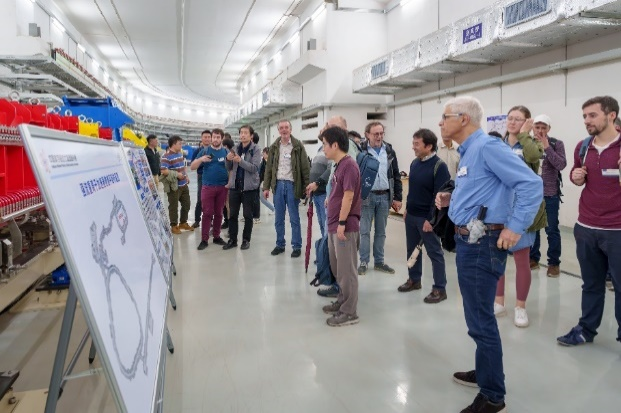11th International Conference on Nuclear Physics at Storage Rings Held in Huizhou
From November 18 to 22, the 11th International Conference on Nuclear Physics at Storage Rings (STORI' 24) was successfully held at the Huizhou Campus of the Institute of Modern Physics (IMP), Chinese Academy of Sciences.
The conference was jointly organized by IMP, the Southern Center for Nuclear Science Theory, and the China Center of Advanced Science and Technology.
Serving as a platform for researchers to discuss the recent achievements and future trends in the field of nuclear physics, the conference featured various forms of exchange, including keynote speeches, invited talks, oral presentations, and poster presentations. The conference focused on frontier topics such as nuclear structure and nuclear astrophysics, fundamental atomic processes, hadron spectroscopy and sub-nucleon degrees of freedom, antiproton-nucleon interactions, stored ion beams, fundamental symmetries and interactions.
The conference attracted more than 100 participants from over 30 universities and research institutions in China and abroad. 50 researchers delivered academic reports, and 32 researchers presented their academic posters.
At the closing ceremony, Prof. Yury A. Litvinov from the GSI Helmholtzzentrum für Schwerionenforschung delivered a summary speech. Additionally, to encourage young scholars and students to actively participate in academic exchanges, three Best Posters were awarded.

Figure 1. Poster Presentation Session

Figure 2. Group Photo

Figure 3. Best Poster Award
The conference also invited the renowned experimental nuclear physicist, Prof. Klaus Blaum from the Max Planck Institute for Nuclear Physics in Heidelberg, Germany, to deliver a public lecture titled "Exotic matter--Exciting insights into the origin of the world". This lecture not only sparked enthusiastic responses from attendees, but also attracted over 70 middle school students to listen and actively participate in the Q&A session. Meanwhile, the event was also live-streamed online, attracting about 6,000 viewers and further expanding the popularization of nuclear physics knowledge.

Figure 4. Public Lecture Session
During the conference, participants also visited the High Intensity heavy-ion Accelerator Facility (HIAF), a major national science and technology infrastructure.

Figure 5. Participants visiting HIAF
The successful holding of this conference has established a cooperation platform for experimental physicists, theorists, accelerator experts, and researchers in related interdisciplinary fields based on heavy-ion storage rings.



 甘公网安备 62010202000713号
甘公网安备 62010202000713号


